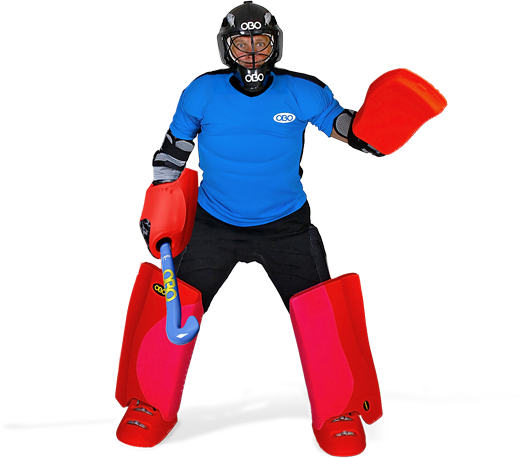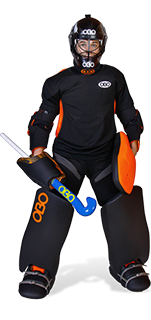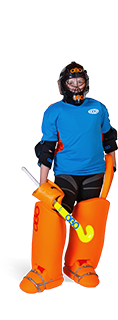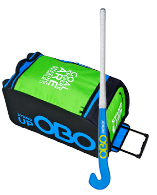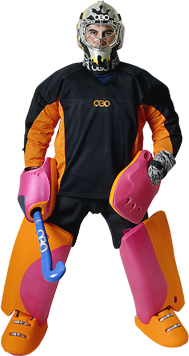KEEPERS RESOURCES

Young Goalies

One of the most important factors in the development of a goalkeeper is getting good, basic instruction early. Too many times, the first specialised instruction a keeper receives is after he/she has been identified as an elite keeper.
Good, basic instruction isn’t difficult. It requires a coach to have an understanding of the skills required of the position, a concept of what he wants the position played like and the ability to reinforce them. A keeper coach doesn’t need to have been a keeper, they don’t even need to be a keeper coach, he/she has to be an advocate for the position and is responsible for making sure that keepers have the opportunity to learn through supervised repetition.
Supervised repetition is the setting for what works best for your needs. Whether it be making 15 extra minutes to go to goal in a team training session or pulling eight local keepers together for a regional training weekend, it’s the time you’re working with keepers to work on specific situations or skills.
For the purposes of this tip, I just want to focus on coaching beginning keepers. I think it’s important to identify as a team, and in some ways as a league/region how you want to develop keepers. In the ideal world, every team has a qualified keeper coach. Reality says it can be anyone including the team’s one and only coach. Some leagues have been creative and arranged for a keeper coach to be shared among the league’s teams. Whatever your scenario, my experience has been that you get the most success working with keepers by having a specific coach work with a group in controlled settings.
By controlled settings I mean drills where you can focus on specific skills, giving keepers the opportunity to practice and master skills. It all sounds rather dry, but it shouldn’t. It’s practice; and practice is games; and games are fun. Mastering skills should be fun. It takes a lot to create an environment where keepers are constantly motivated, but if you do that you win half the battle.
Going back to the fun/motivating stuff, I’ll start with something not fun, but important. Make a list of all the skills that you want your keepers to have. That will be the foundation of getting what you want out of the experience as a coach. Turning the list in to drills isn’t hard. Get a feeder, put balls repetitively in a place, and give the keepers the opportunity to play those balls and voila, you have drills. Still doesn’t quite sound like fun, though.
It’s all in the presentation when it comes to drills. Footwork has to be fun, left footed instep clearing has to be fun, stick-side aerials have to be fun. Fun is greatly influenced by what and how actions are reinforced. By that, I mean a coach praising a desired quality/effort/execution in a natural, enthusiastic way, a la “great skill!”
Going back to beginning keepers, recognise that there are a variety of qualities to the position: flexibility, strength, agility and co-ordination are all required to execute skills. You have to coach them. You can do that with games and relays easily enough. Think of the footwork required as a ball travels around the circle and lay a course for the keepers to go through. You can turn it into a race by having the keepers run it for time, while still concentrating on form. You don’t want to reinforce bad form. I have the hand/toss game that I have in one of the earlier tips. Make it a situation appropriate to keepers age/level. I think for beginning keepers it’s important to make it a game.
As far as basic skills, I think it’s crucial to emphasise from the first time a keeper puts pads on, the ball has to go some place; that the save is a save/clear. A good way of developing a skills inventory is to think of shots that can happen in a game, where they go in goal and where a keeper has to be able to clear them. Right-side balls with pace at hands and feet, left-side, balls with medium pace and all have to be cleared to left and right.
With a little imagination, that’s the next phase for developing your curriculum. Put a feeder in with a bunch of balls, they have to put it at a spot, the keeper has to play it to a target. The target could be another keeper, it could be two cones, it could be a keeper defending two cones, it could be a field player, it could be anything, just reinforce the concept that the ball has to go somewhere. Getting there could take two skills. Make sure that keepers have the time and opportunity to finish a ball. Count how many times a keeper is able to hit the target. Move the targets, have them worth different points, there are a ton of extensions you can add on to a drill. Put rebounders in that the keeper has to clear through.
Quality and quantity are important when teaching skills. You don’t want to have a keeper in a drill so long that they’re tired and can’t do anything but get hit. Groups of three or four work well as far as getting good repetitions and staying fresh. You can have them take five to ten balls and switch out, or recycle them so that they go one after the other.
Movement is important. Keepers need to be able to play shots from a static position and shots as they’re moving. Footwork is critical in determining how a keeper can play a ball. How a keeper plays a ball is going to dictate what he can do next, i.e. recovery. A keeper needs to be able to play the second shot. When you think of all of these elements, there’s a lot to reinforce.
It’s important to use the resources available to you when working with beginning keepers. We might not have a ton of hockey balls, but we probably have a tennis racquet and a ton of balls, we probably have a soccer ball. Use these things. I like to use a size three soccer ball and just have keepers play the ball first time with their feet with just a stick in their hand. Have the keepers kick in a group and see how many kicks they can put together. Have them call the keeper they want to kick to.
Use your imagination. I think there are a million fun drills out there for the taking if we just use our minds. On a co-operative note, I think it’s important to share ideas.
An important part of coaching keepers is identifying what motivates them. This is especially true with younger keepers. Some times it might be silly, but if it gets them to do what you want them to do, who’s to argue.
I think coaching beginning keepers can be a very rewarding experience. You see them grow so quickly with structured attention. Hopefully that’s something that’s happening in your area and if not, maybe you could get it going!
Good luck,
Jon
e-mail Jon
Please note that OBO together with Jon O’Haire hold copyright over any material appearing on tips pages. We welcome the printing and distribution of these tips, provided that they are not sold, or used for financial gain. This paragraph must appear on all printed or distributed copies. The photographs above must not be used in any form without express permission from Jon O’Haire.
Comments
Leave Your Comments Below















